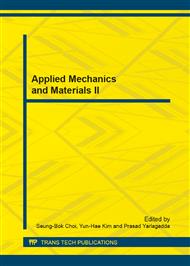p.904
p.908
p.915
p.920
p.926
p.931
p.936
p.941
p.945
The Properties of High-Strength Concrete Containing Super-Fine Fly Ash and Limestone Powder
Abstract:
In this study, a high-strength concrete containing 25% super-fine fly ash and 10% limestone powder was prepared, and its properties were investigated by comparing with those of pure cement concrete. The results show that the concrete containing super-fine fly ash and limestone powder can get a larger initial slump and a smaller slump loss than the pure cement concrete with the same super plasticizer content. In the case of almost the same 28 days' compressive strength, the concrete containing super-fine fly ash and limestone powder exhibits a lower adiabatic temperature rise, a lower early strength, a higher late strength, a lower permeability, and a larger carbonation depth than the pure cement concrete.
Info:
Periodical:
Pages:
926-930
Citation:
Online since:
December 2013
Authors:
Price:
Сopyright:
© 2014 Trans Tech Publications Ltd. All Rights Reserved
Share:
Citation:


